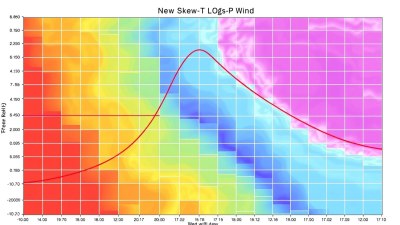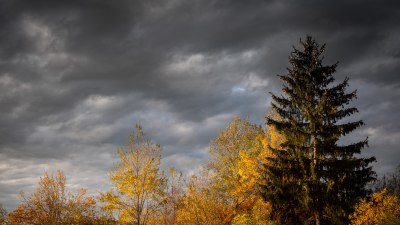How the Forecast Keeps Its Secrets Until You Step Outside
Explore how weather forecasts maintain accuracy and reveal their true predictions only when you step outside.

The weather forecast is a ubiquitous part of daily life, guiding choices from what to wear to whether to carry an umbrella. Yet, despite the impressive precision of meteorological models and data analysis, the forecast often feels like a secret that only fully unveils itself once we step outside. This perceived mystery arises from the complex interplay between meteorological science, human perception, and the inherent variability of weather phenomena. Understanding how forecasts keep their secrets requires delving into the science of weather prediction, the communication strategies employed by forecasters, and the physical realities of atmospheric dynamics.
The Science Behind Weather Forecasting
Weather forecasting is fundamentally a scientific endeavor driven by data acquisition, mathematical modeling, and statistical analysis. Meteorologists collect vast amounts of data from satellites, radar systems, weather balloons, surface stations, and ocean buoys. These inputs feed into numerical weather prediction (NWP) models, which solve complex equations governing atmospheric physics to simulate future weather conditions.
Despite advances in computational power and modeling techniques, the atmosphere remains a chaotic system. Small initial errors or unmeasured variables can lead to divergent outcomes, a phenomenon known as the butterfly effect. Thus, forecasts inherently carry uncertainty, especially as the prediction period extends. This intrinsic unpredictability means a forecast’s accuracy naturally improves as the actual weather event approaches.
Why Forecasts Appear Vague or Secretive
One reason forecasts appear like guarded secrets is their probabilistic nature. Instead of predicting weather with absolute certainty, meteorologists often express outcomes probabilistically, such as a 60% chance of rain. Communicating probabilities to the public poses challenges because laypeople may interpret '60% chance' differently or expect definitiveness. This leads to a sensation that the forecast withholds information or that it only 'reveals' itself in action.
Moreover, many meteorological terms and scales do not translate intuitively to everyday experience. Words like 'partly cloudy,' 'isolated showers,' or 'scattered thunderstorms' provide nuanced descriptions that capture uncertainty and spatial variability but can confound expectations. This ambiguity means the forecast may seem like a secret until the actual weather clarifies the picture.
The Role of Microclimates and Local Variability
Another source of forecast secrecy is the presence of microclimates, localized atmospheric zones with distinct conditions. Urban heat islands, valleys, coastal areas, and mountain regions often experience weather different from the surrounding areas. Forecasts typically cover broader regions due to model resolution limits and data aggregation, potentially masking local variability.
For example, a forecast may predict rain in a metropolitan area but leave some neighborhoods dry, or a sunny forecast may miss an unexpected afternoon shower in a small park. These local differences make the forecast feel secretive because the predicted pattern does not always align exactly with one's immediate environment.
Forecast Updates and Real-Time Adjustments
Forecasters continuously update predictions as new data streams in, adjusting models and disseminating revised forecasts. However, not everyone updates their forecast information in real time, leading to experiences where the forecast state seems fixed in the past. The latent nature of weather, combined with asynchronous communication channels like newspapers, television, and apps, contributes to the delayed revelation of forecast details.
In addition, some weather phenomena develop rapidly, such as thunderstorms or fog, complicating early predictions. Nowcasting techniques aim to tackle this by using near real-time data to provide short-term forecasts. While these improve accuracy, the nature of these updates means that the full story of the forecast unfolds gradually and is only completely apparent when stepping outside.
Psychological Factors Influencing Perception of Forecast Secrets
Human cognitive biases also shape how individuals perceive weather forecasts. Confirmation bias can lead people to remember forecast hits and forget misses or vice versa. The desire for certainty means that ambiguous forecasts may be viewed as secretive or unreliable.
Moreover, sensory cues from the environment influence the assessment of forecast accuracy. Feeling a sudden breeze, seeing darkening skies, or experiencing early raindrops can confirm or contradict expectations, reinforcing the impression that the forecast 'kept secrets' until the moment of exposure to actual weather conditions.
Technological Advances and the Future of Forecast Transparency
Advances in technology are progressively making weather forecasts less enigmatic. Higher resolution models, machine learning algorithms, and improved remote sensing devices offer more detailed and timely data. Interactive forecasting tools allow users to explore various scenarios and probabilities, enhancing understanding.
Augmented reality and personalized weather apps can overlay forecast information on one’s exact location, reducing the impact of microclimates and enhancing immediate clarity. However, even with these improvements, the atmosphere's complexity guarantees some level of inherent unpredictability, ensuring that the forecast will always have an element of unfolding mystery as you step outside.
In summary, the forecast keeps its secrets due to the chaotic nature of the atmosphere, probabilistic communication methods, local climate variations, update delays, and human perception quirks. These factors combine to make weather predictions feel like guarded knowledge that only fully reveals itself in the presence of actual weather conditions. Appreciating the scientific and psychological layers behind forecasting can enrich our understanding and patience with the inevitable uncertainties hidden in each day's weather predictions.











